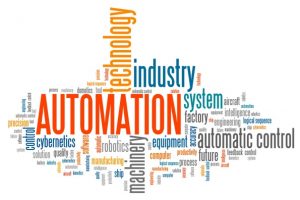Automation: The Driver for Change

Engaging Students in Manufacturing
June 29, 2020
How Sustainable Manufacturing Benefits Everyone
September 17, 2020
_____________________________________________________________________________________________________________________________________________________________________
By Robbie West | Published July 28, 2020
_____________________________________________________________________________________________________________________________________________________________________
The scope of the manufacturing industry is changing due to the implementation of automation. Improving efficiency, producing high-quality products, and reducing labor and production costs are all achieved through automation. Implementing automation thrusts manufacturing companies ahead of their competition. The manufacturing workforce has been on a steady decline as wage demands continue to rise. Many U.S. companies have outsourced their labor to meet production demands. However, automation is changing this trend. Implementing automation into an organization drives down operating costs and requires fewer employees to be highly productive. In the early 1900s, automation was implemented in America. Ford Motor Company introduced a car production assembly that pioneered automation. Automation is not just channeled toward producing big machines, but it can also be used to do incredibly detailed steps.
There are potential problems that can arise when companies try to implement automation. Managing floor space, managing costs, deciding what to automate, recruiting skilled employees, and employees resisting change are all potential problems. Automation machines are expensive to implement upfront but pay for themselves over time. Deciding whether to produce items manually or through automation is something that companies should spend a lot of time researching before making their decision.
Selecting students through STEM schools and other educational programs can help employers find skilled workers. Hiring young employees and training them can be a long-term strategic approach. The most challenging problem that management deals with when implementing automation is persuading their employees. More times than not employees are change adverse; however, this can be mitigated. Employees may also think that implementing automation will lead to rightsizing. Management must explain the importance of automation regarding the company’s overall success.
Running different tests and algorithms can help a company determine what steps to take to increase productivity. Implementing automation can increase production up to 30%. Manufacturing executives are starting to believe that automation is worth the cost of implementation since it improves their competitive edge. Automation increases safety, reduces manual labor, lowers insurance claims, and improves production. Increasing automation also increases the demand for skilled maintenance and technician jobs. There always needs to be technicians around in case a machine goes down. The longer a piece of equipment is unavailable, the more money a company loses. Implementing automation decreases the chance of human error in the production process. Increasing safety is one of the top-selling points for automation, especially in manufacturing. Safety is a pillar for every company.
Automation also reduces waste. With growing interest in protecting the ecosystem, automation is the perfect option for stakeholders who want to save the environment. Machines are constructed to alert an operator if the manufacturing process has steered off course or has gone outside its normal tolerance limits. This will reduce the number of excess materials being used. Automation also reduces the need for operating machines such as scissor lifts and forklifts. Companies are implementing internet of things (IoT) into their machines. IoT automates reports and shortens time-consuming tasks. Being able to control different facets of a company from a single screen is ideal. The implementation of automation allows manufacturers to become more versatile, which leads to a competitive advantage in the market.

The projection of automation in the American manufacturing industry is trending upwards. During the COVID-19 pandemic, many manufacturing companies had to halt their operations. Companies with preexisting automation were still able to operate with minimal disruption. Fortune 500 companies such as, Facebook and Google, are adopting a work-from-home concept year-round. If manufacturing companies could replicate these concepts and work from home, it would revolutionize the manufacturing industry. Accessing machines from home and controlling them would promote safety and efficiency. The systems would be able to operate during pandemics without changes to their business strategy. Overall, automation is deepening its’ footprint in many American industries. This industry will continue to grow as the spectrum of technology increases.


